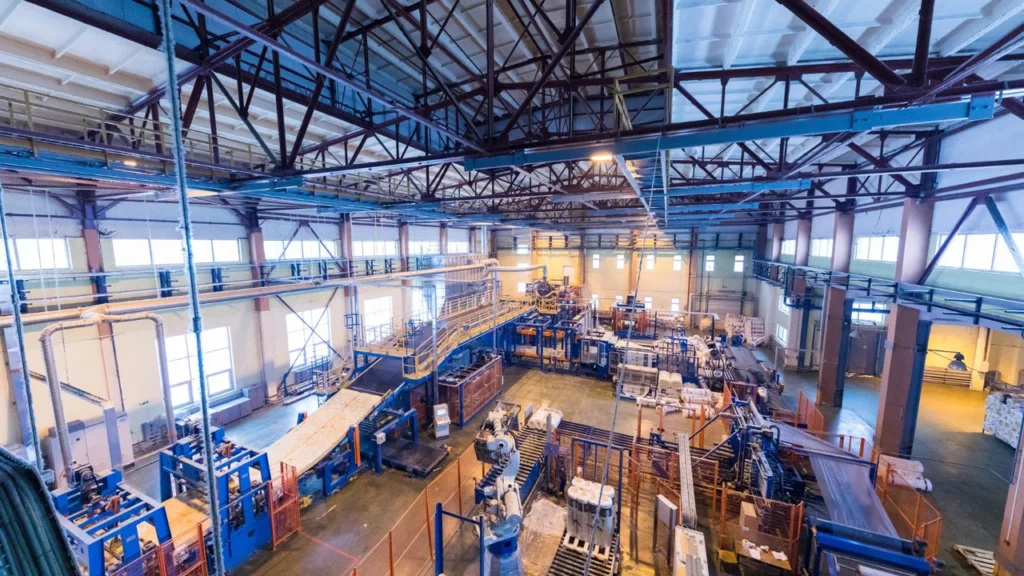Automation has become the backbone of modern industrial growth, powering everything from high-speed production lines to precision robotics and real-time data systems. Yet as factories become more advanced, the need for automation safety grows even stronger. When automated machinery, collaborative robots, AGVs, and smart control systems operate together, even a minor error can cause severe consequences—from physical injury to extended downtime, legal liability, or system-wide failure. This is why industrial facilities across the world are strengthening their approach to safety, compliance, and robotics regulations to ensure safe and resilient operations.
In this article, we explore the core principles and global benchmarks of automation safety, the role of robotics regulations, how compliance influences industrial operations, and best practices that ensure every step of automation remains safe, sustainable, and efficient.
Introduction to Automation Safety
The rise of Industry 4.0 has brought an unprecedented wave of digitalization and automation. Autonomous mobile robots, robotic arms, high-speed conveyor systems, and advanced sensors now operate side-by-side with human workers. As a result, automation safety has evolved into a fundamental requirement for any facility integrating automated technologies.
Automation safety refers to the policies, systems, and engineering controls that protect workers, machines, and infrastructure. Without these safeguards, companies not only violate robotics regulations but also risk downtime, costly accidents, and operational disruption. Ensuring full compliance is critical for protecting both productivity and workforce well-being.
Understanding Automation Safety Requirements
What Is Automation Safety?
Automation safety is the structured approach to preventing hazards that arise from automated systems. This includes mechanical risks, electrical failures, software malfunctions, erratic robot movements, and human-robot interaction challenges. Strong safety programs also ensure that facilities follow robotics regulations and meet mandatory compliance requirements.
Automation safety is especially important in environments where robots and humans work closely—such as assembly lines, warehouse sorting facilities, packaging plants, and precision manufacturing. The higher the level of automation, the stricter the safety requirements must be.
Key Components of Automation Safety
- Machine Guarding: Shields workers from moving parts, pinch points, and unexpected motion.
- Emergency Stop Systems: Allow immediate shutdowns during abnormal operations.
- Human–Machine Interfaces (HMIs): Provide safe and intuitive control points for operators.
- Fail-Safe & Redundant Systems: Ensure machinery defaults to safe behavior during malfunction.
- Lockout–Tagout Procedures: Prevent accidental activation during maintenance.
These systems form the foundation of any robust automation safety strategy and support a facility’s adherence to compliance requirements.
Global Safety Standards and Robotics Regulations
To maintain high levels of worker safety and machine reliability, international organizations have established strict robotics regulations and automation standards. These frameworks guide engineers and manufacturers in designing safe automated environments.
International Standards
- ISO 10218: Governs safety requirements for industrial robots and integration systems.
- ISO/TS 15066: Focuses on collaborative robot (cobot) safety, especially when robots and people share spaces.
- ISO 13849 & IEC 62061: Define functional safety of control systems and risk-reduction measures.
These global automation safety standards help eliminate ambiguity, offering clear guidelines on how to evaluate risk and implement control measures. They are widely adopted across manufacturing, automotive, aerospace, and logistics sectors.
Regional and Industry-Specific Regulations
In addition to international rules, countries enforce their own compliance policies:
- EU Machinery Directive: Ensures machine safety before market placement.
- OSHA Regulations (USA): Provide workplace safety requirements and automated equipment guidelines.
- Automotive & Electronics Industry Rules: Require stricter levels of automation safety due to high precision needs.
Facilities must align both global and regional robotics regulations to maintain full compliance and avoid penalties.
Risk Assessment in Automated Industrial Environments
A cornerstone of automation safety is the ability to identify, evaluate, and mitigate risk. Risk assessments ensure that automated systems are not only efficient but also safe to operate even in unpredictable conditions.
Hazard Identification
Common automation-related hazards include:
- High-speed robotic arms with unpredictable trajectories
- Electrical faults from PLC or motor systems
- Laser or sensor malfunction in AGVs
- Unexpected machine restart after power recovery
- Pneumatic and hydraulic pressure risks
Risk Evaluation and Categorization
Facilities must evaluate risks based on:
- Severity: Potential harm level
- Exposure: How frequently workers are near the hazard
- Probability: Likelihood of failure or error
The integration of robotics regulations during assessments ensures all risk mitigation measures comply with international safety standards.
Implementation of Controls
- Engineering Controls: Interlocks, physical barriers, speed limits, and automatic shutoff systems.
- Administrative Controls: SOPs, training programs, signage, and operational boundaries.
- PPE: The last defense against unavoidable hazards.
Risk assessments must be reviewed periodically to maintain compliance and align with new automation safety regulations.
Technologies Enhancing Automation Safety
Modern technology has introduced a range of tools that significantly improve automation safety. These innovations not only reduce risk but also boost operational efficiency, making them indispensable for modern factories.
Smart Sensors and Monitoring
Smart sensors—including LiDAR, proximity sensors, high-resolution cameras, and thermal detectors—allow real-time monitoring of automated machinery. They can identify abnormal movements, detect human presence, or trigger emergency stops instantly.
Safety PLCs and Redundant Systems
Safety programmable logic controllers ensure that a machine operates safely at all times. Redundant control systems prevent catastrophic failure in case the primary system malfunctions, a key requirement in many robotics regulations.
Collaborative Robotics (Cobots)
Cobots are engineered with intrinsic safety features such as:
- Force limitations
- Speed restrictions
- Collision monitoring
- Smooth, predictable motion paths
These features ensure safer human–robot interaction, especially in flexible manufacturing lines.
Integrating Automation Safety into Industrial Operations
Successful automation is not just about deploying machinery—it is about ensuring every automated component operates safely throughout its lifecycle. Integrating automation safety into daily operations requires a strategic combination of engineering, training, monitoring, and documentation.
Safety by Design
Safety must begin at the design phase. This approach—often referred to as “Safety by Design”—ensures hazards are eliminated as early as possible.
- Using risk-free robot paths and layouts
- Designing buffer zones between workers and moving robots
- Implementing safe operational speeds
- Ensuring compliance with robotics regulations from the start
Advanced modeling tools and digital twin simulations also help engineers anticipate dangerous interactions before machines are physically installed. This significantly reduces onsite risks and improves long-term compliance.
Training and Workforce Preparedness
Automation safety relies heavily on worker awareness. Even the most advanced machines can become dangerous if operators are not properly trained.
- Training on safe human–robot interactions
- Understanding emergency stop procedures
- Familiarity with safety indicators and warning signals
- Robotics regulations compliance training
Facilities with strong training programs experience fewer safety incidents, stronger compliance, and improved operational reliability.
Safety Audits and Continuous Improvement
Ongoing audits are essential to maintaining automation safety. These assessments identify new hazards, evaluate system performance, and ensure robotics regulations are followed consistently.
- Monthly or quarterly safety inspections
- Review of safety PLC performance
- Documentation and reporting of near-miss incidents
- Updating compliance programs based on audit findings
Continuous improvement ensures that automation evolves safely as technologies and workflows change.
Common Challenges in Automation Safety Compliance
Despite clear guidelines, many industrial environments struggle to maintain consistent automation safety. Understanding these challenges is crucial for building an effective compliance strategy.
- Rapid technological change: Robotics and automation systems evolve faster than many regulatory updates.
- Operator skill gaps: Workers may lack the training needed to safely interact with advanced machines.
- Integration complexities: Multi-vendor equipment must be synchronized for safety to be effective.
- Cost considerations: Some companies delay safety upgrades due to budget constraints, risking compliance violations.
Proactive planning, training, and investment help resolve these issues while ensuring safe and compliant operations.
Best Practices for a Safe and Compliant Automated Facility
To create a safe industrial environment with full compliance, companies should follow these best practices:
- Conduct thorough risk assessments before commissioning any automated system.
- Document all safety procedures and updates to comply with robotics regulations.
- Keep emergency stop devices accessible at all times.
- Use certified safety components and conduct periodic verification.
- Implement data-driven monitoring to track real-time safety events.
- Ensure operators receive ongoing automation safety training.
These practices align with global and regional standards, ensuring long-term compliance and operational excellence.
Conclusion
Automation safety is more than a regulatory requirement—it is the foundation of efficient, sustainable, and human-centered industrial operations. As factories increasingly adopt robotics, AGVs, cobots, and smart control systems, adherence to automation safety standards becomes critical to preventing accidents, maintaining productivity, and staying compliant with global robotics regulations.
Facilities that invest in risk assessment, operator training, safety-by-design principles, and advanced monitoring technologies gain long-term advantages, including lower downtime, fewer incidents, and stronger regulatory compliance. As automation continues to evolve, companies that prioritize safety today will be better prepared for the next generation of industrial innovation.



